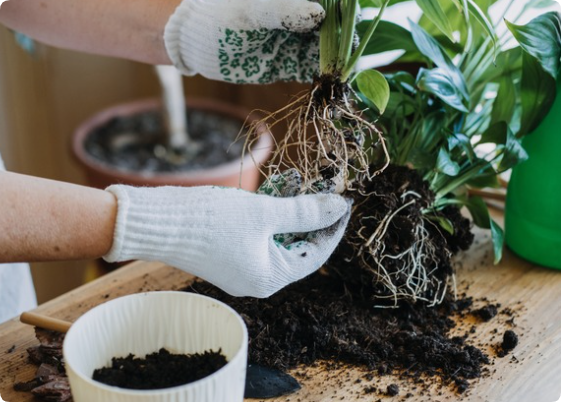For B2B purchasers, especially those in the home decor or gardening industry, understanding how to manage plants in pots without drainage holes is essential. While these pots are highly desirable for their aesthetics, they can pose challenges in plant care, particularly the risk of root rot. This article provides actionable tips and insights to help you maintain plant health and avoid common pitfalls.
Why Use Pots Without Drainage Holes?
Pots without drainage holes are preferred for their clean design and practicality in certain settings. They eliminate concerns about water leaking onto surfaces, making them ideal for:
- Indoor Use: Offices, living rooms, and kitchens.
- Decorative Displays: Gift plants or event decorations.
- Retail Markets: Popular in boutique and large-scale stores due to their sleek appearance.
While they offer convenience, managing plant care in such pots requires proper techniques to prevent root rot.
What Causes Root Rot?
Root rot occurs when roots are exposed to excessive moisture, leading to fungal infections that cause the roots to decay. In pots without drainage holes, water collects at the bottom, making it difficult for roots to access oxygen.

Key Causes:
- Overwatering: Water accumulates in the soil with nowhere to escape.
- Improper Soil Mix: Dense or heavy soil retains excess moisture.
- Inadequate Care: Irregular watering schedules and lack of monitoring.
How to Prevent Root Rot in Pots Without Drainage Holes
Preventing root rot is a manageable task if you follow these proven strategies:
1. Add a Drainage Layer
Create a barrier at the bottom of the pot using materials like pebbles, charcoal, or pumice. This layer allows excess water to settle below the roots, reducing their exposure to standing water.
- Best for: Decorative pots with limited soil depth.
- Tip: Ensure the drainage layer is no thicker than 2–3 cm to leave ample room for soil and roots.
2. Use Well-Draining Soil
Choose soil mixes designed for optimal water flow. Look for components like perlite, sand, or coconut coir, which enhance drainage and prevent waterlogging.
3. Double Potting Method
Place the plant in a smaller pot with drainage holes, and insert it into the decorative pot. This allows you to remove the inner pot for watering and ensures no water accumulates inside the outer pot.
4. Adjust Watering Habits
Watering frequency and quantity are critical. Always check soil moisture before watering to avoid overhydration.
5. Water-Absorbing Crystals
Mix water-absorbing polymers into the soil. These crystals hold water and release it slowly, keeping moisture levels balanced without oversaturating the roots.
Comparison of Prevention Methods
To help you decide the best approach, the table below compares the effectiveness, ease, and cost of each method:
| Prevention Method | Effectiveness | Ease of Use | Cost | Best Use Case |
|---|---|---|---|---|
| Drainage Layer | Moderate | Easy | Low | Small to medium decorative pots. |
| Well-Draining Soil | High | Easy | Moderate | All plant types, especially succulents. |
| Double Potting Method | Very High | Moderate | Moderate | High-value plants or versatile care needs. |
| Adjusted Watering Habits | High | Easy | Low | Plants requiring minimal watering. |
| Water-Absorbing Crystals | High | Easy | High | Indoor plants in dry environments. |
Maintenance Tips for Long-Term Success
Preventing root rot doesn’t end with setup. Regular maintenance ensures the health of your plants over time.
Planting in Pots Without Drainage 🌱💚
- Inspect Regularly: Look for yellowing leaves, mushy roots, or unusual odors.
- Replace Soil Annually: This prevents salt buildup and removes any residual pathogens.
- Monitor Water Levels: Use a moisture meter for accuracy.
Why Choose Hale Planter?
At Hale Planter, we specialize in ceramic pots that combine aesthetic appeal with functional design. For B2B purchasers, we offer:
- Customization Options: Tailored designs to meet your market needs.
- High-Quality Materials: Durable, eco-friendly ceramics.
- Expert Guidance: Professional advice on plant care and product selection.
Our pots are not only beautiful but also designed to support healthy plant growth, even in pots without drainage holes.
Conclusion
Preventing root rot in pots without drainage holes requires a thoughtful approach, combining proper soil management, drainage solutions, and watering techniques. By following these tips, B2B purchasers can confidently stock and recommend products that enhance both aesthetics and plant health.
Visit Hale Planter to explore our range of customizable pots and find the perfect solutions for your business.

